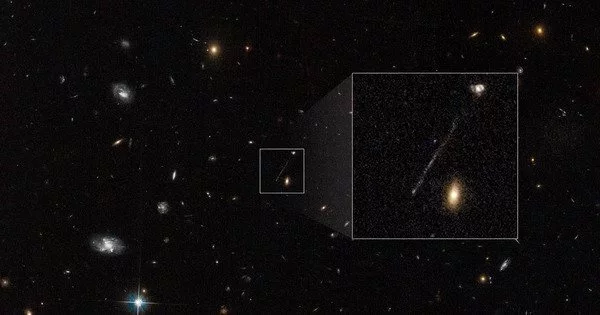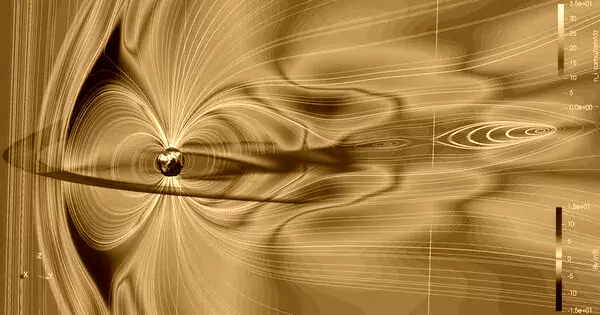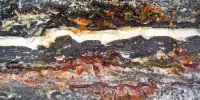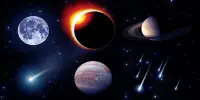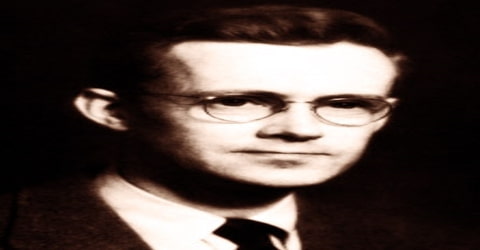The Hubble Space Telescope has discovered a trail of stars that may have been left by a rogue black hole. The phenomenon was discovered in 2018 and was initially thought to be a small galaxy being torn apart by the gravitational forces of a neighboring galaxy. However, Hubble’s high-resolution imaging revealed that the trail of stars was a long stream of stars stretching over 200,000 light-years, possibly created by a wandering black hole. The black hole may have entered a dense region of a galaxy and begun to pull stars off their original paths.
There’s an invisible monster loose in intergalactic space, moving so quickly that if it were in our solar system, it could travel from Earth to the Moon in 14 minutes. This supermassive black hole, weighing as much as 20 million Suns, has left a 200,000-light-year-long “contrail” of newborn stars, twice the size of our Milky Way galaxy. It’s most likely the result of a strange game of galactic billiards between three massive black holes.
Rather than devouring stars ahead of it like a cosmic Pac-Man, the speedy black hole is plowing into gas in front of it in order to spark the formation of new stars along a narrow corridor. The black hole is moving too quickly to stop for a snack. Nothing like it has ever been seen before, but it was captured accidentally by NASA’s Hubble Space Telescope.
“We think we’re seeing a wake behind the black hole where the gas cools and is able to form stars. So, we’re looking at star formation trailing the black hole,” said Pieter van Dokkum of Yale University in New Haven, Connecticut. “What we’re seeing is the aftermath. Like the wake behind a ship we’re seeing the wake behind the black hole.” The trail must have lots of new stars, given that it is almost half as bright as the host galaxy it is linked to.
We think we’re seeing a wake behind the black hole where the gas cools and is able to form stars. So, we’re looking at star formation trailing the black hole.
Pieter van Dokkum
The black hole is located at one end of the column, which extends all the way back to its parent galaxy. The outermost tip of the column has a remarkably bright knot of ionized oxygen. Researchers believe the gas is being shocked and heated by the motion of the black hole striking the gas, or by radiation from an accretion disk surrounding the black hole. “The supersonic, very high-velocity impact of the black hole moving through the gas shocks the gas in front of it.” “No one knows exactly how it works,” van Dokkum said.
“It was pure serendipity that we found it,” van Dokkum added. In a nearby dwarf galaxy, he was looking for globular star clusters. “I was just scanning through the Hubble image when I noticed a little streak.” I immediately thought to myself, ‘Oh, a cosmic ray hitting the camera detector and causing a linear imaging artifact.’ We discovered it was still present after we eliminated cosmic rays. It didn’t resemble anything we’d seen before.”
Because it was so strange, van Dokkum and his colleagues conducted additional spectroscopy with the W. M. Keck Observatories in Hawaii. The star trail, he says, is “quite astonishing, very, very bright, and very unusual.” This led to the conclusion that he was looking at the aftermath of a black hole flying through a halo of gas surrounding the host galaxy.
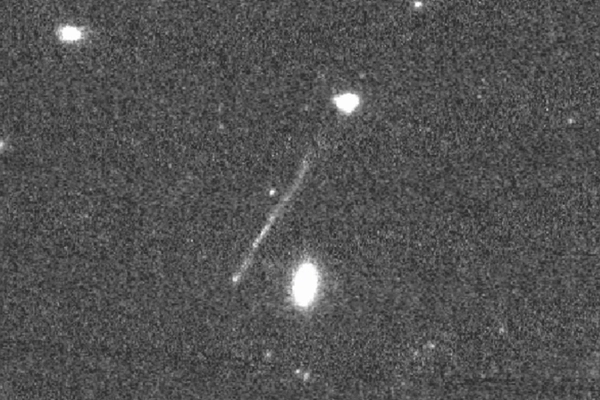
This intergalactic skyrocket is most likely the result of multiple supermassive black hole collisions. Astronomers believe the first two galaxies collided around 50 million years ago. This brought two supermassive black holes together at their centers. As a binary black hole, they whirled around each other.
Then another galaxy with its own supermassive black hole appeared. This is in keeping with the old adage that “two’s company and three’s a crowd.” The interaction of three black holes resulted in a chaotic and unstable configuration. One of the black holes stole momentum from the other two and was ejected from the host galaxy. The original binary may have remained intact, or the new interloper black hole may have replaced one of the two that were in the original binary, and kicked out the previous companion.
When the single black hole ejected, the binary black holes ejected in the opposite direction. A feature visible on the opposite side of the host galaxy could be the runaway binary black hole. The absence of an active black hole at the galaxy’s core is circumstantial evidence for this. The next step is to confirm the black hole explanation with additional observations using NASA’s James Webb Space Telescope and the Chandra X-ray Observatory.
The upcoming Nancy Grace Roman Space Telescope from NASA will provide a wide-angle view of the universe with the same exquisite resolution as Hubble. The Roman observations, as a survey telescope, may have discovered more of these rare and improbable “star-streaks” elsewhere in the universe. This may require machine learning using algorithms that are very good at finding specific weird shapes in a sea of other astronomical data, according to van Dokkum.
